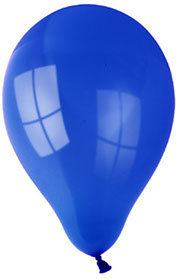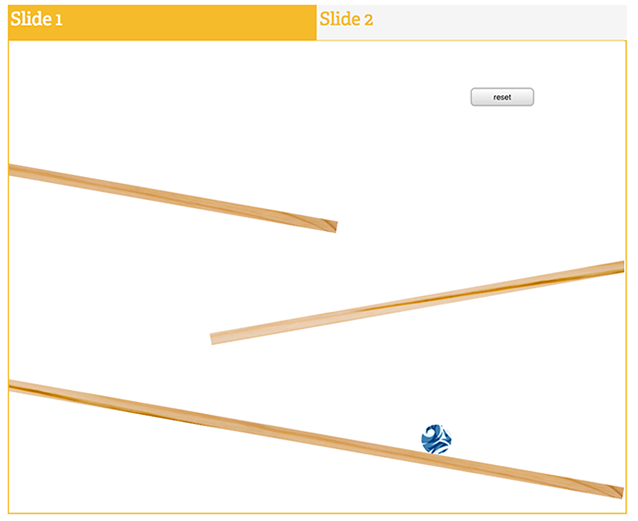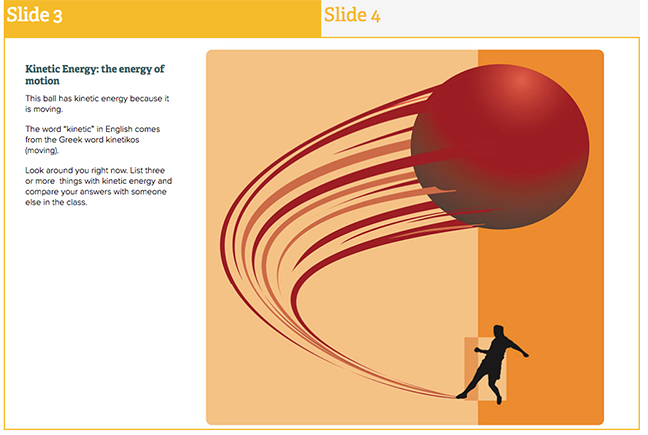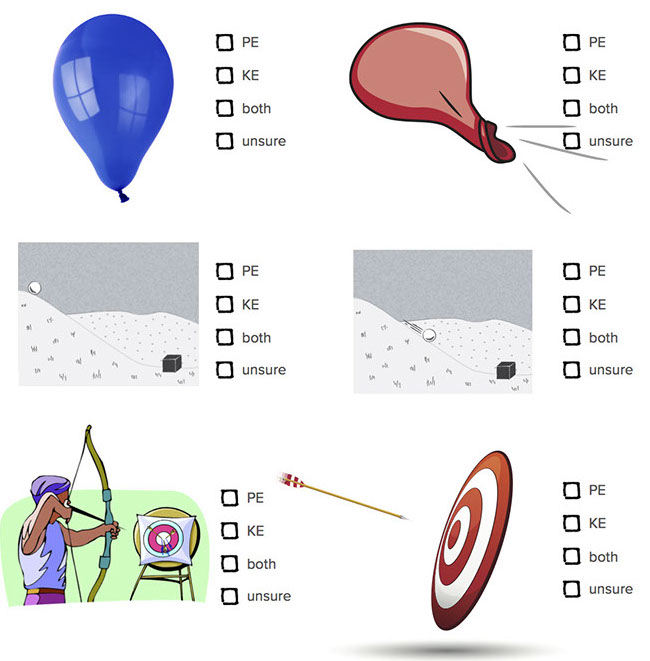SciGen Teacher Dashboard
Unit E1
Potential and Kinetic Energy
 Lesson: Kinetic vs. Potential Energy
Lesson: Kinetic vs. Potential Energy
Duration: Approximately 45 minutes
Students learn to contrast potential and kinetic energy and discover that even when objects are at rest, they can have energy due to their position or shape. Children swinging at a playground serve as the initial model of how energy transfers between potential and kinetic energy.
LEARNING OBJECTIVE
In this activity, students compare potential energy and kinetic energy.
Teacher Tip
- While there are illustrations for all of the examples of potential energy and kinetic energy, the examples are not hard to recreate as demos in the classroom if you have time. For students, seeing objects in person is often more effective than considering a two-dimensional drawing or photo.
Teaching Notes
ACTIVITY OVERVIEW
- Ramp and marble activity to Introduce kinetic and potential (15 minutes)
- Look for kinetic and potential energy around us (15 minutes)
- Interpret illustrations of energy (15 minutes)
Ramp and marble activity to introduce kinetic and potential (15 minutes)

Show the two slides on the right to the class. Tell them that
:
One way scientists talk about energy is with the terms kinetic and potential. Objects have kinetic energy if they are in motion. In contrast, stationary objects that could move if released have potential energy. Have your students apply the terms to the slide animations.
Think about a way the potential energy in Slide 2 could be transformed into kinetic energy (by raising the red barrier).
Go ahead and try moving the red barrier on the slide.
Discuss the effect.
Look for kinetic and potential energy around us (15 minutes)
Display and discuss the two slides on the right. Then assign partners to develops lists of examples of kinetic and potential energy.
Encourage students to make extensive lists. You may wish to have them compare their lists with a partner and then share out unique answers.
:
- Kinetic energy: Tapping feet, a pencil writing on paper, an eraser that someone drops, a student running down the hall, a bird call, or a vibrating cell phone.
- Potential energy: Overhead lights suspended by wires, a compressed spring, someone at the top of a ladder, or water piled up behind a dam. Students may repeat the items in their kinetic energy list, but as stationary objects.

Interpreting illustrations of energy (15 minutes)
You may want to encourage students to justify their multiple choice answers on this page. It is quite possible that students can provide logical reasons for answers that may appear to be incorrect.
:
- Tied balloon. Most likely answer is “potential energy.” However it is unusual for a balloon to not be moving. A slight breeze causes a balloon to sway. So the best answer may be “both.”
- Untied balloon. Here, as the air is released, the balloon moves in the opposite direction as the released air. The best response is “kinetic energy.”
- Large ball on the hill. Everything in the image appears to be stationary. So the best answer is “potential energy.”
- Hill with a moving ball. The moving ball exhibits “kinetic energy.”
- Man ready to release an arrow. One must remain still before shooting an arrow. So the answer is “potential energy.” But it is difficult to hold completely still when holding a bow under tension – one’s arms have a tendency to quiver. So there may be kinetic energy as well.
- Flying arrow. The arrow is clearly moving, so it has kinetic energy.

BETA Version - Please send comments and corrections to info@serpinstitute.org